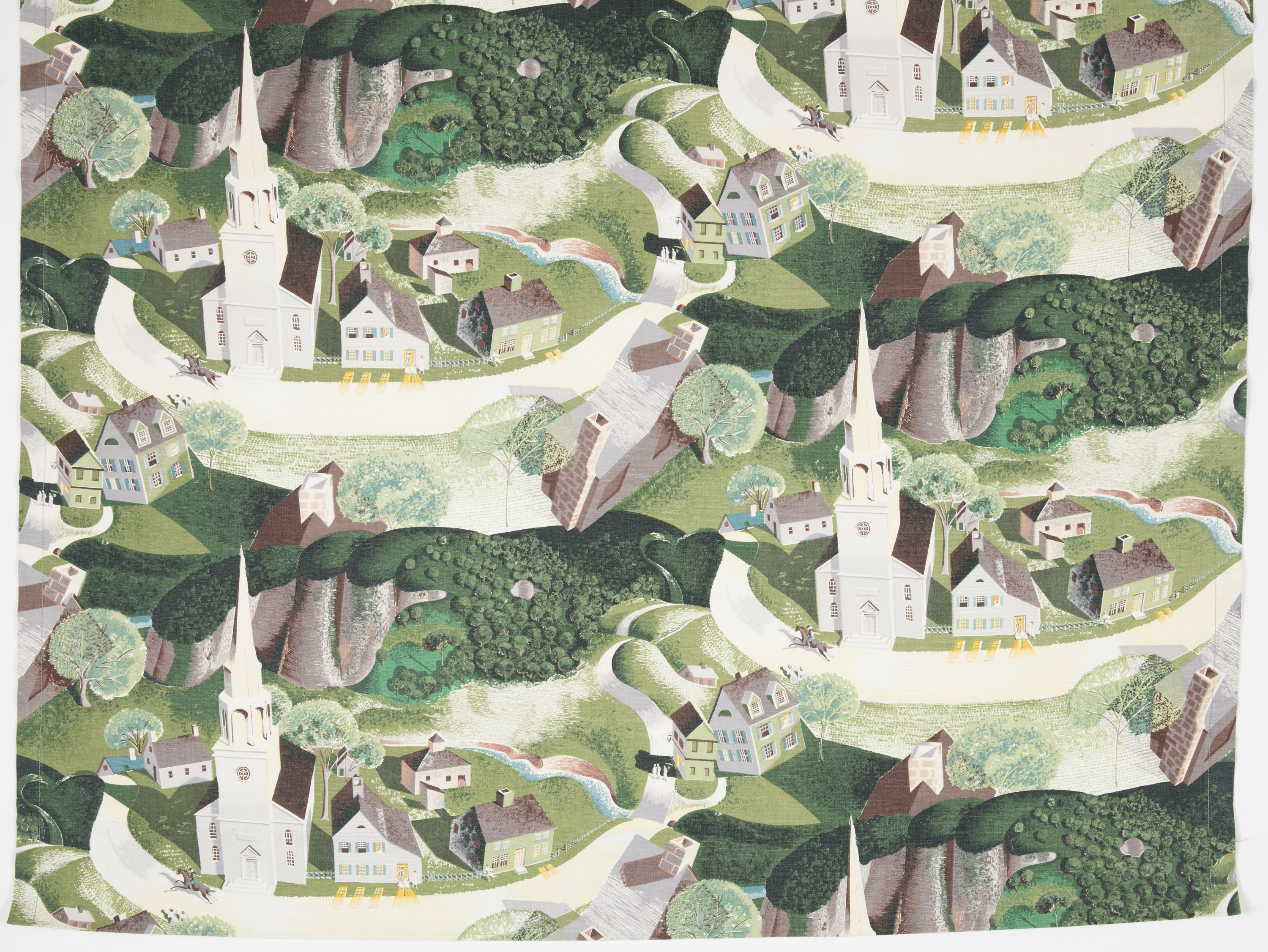Grant Wood is best known for his iconic 1930 painting, “American Gothic,” in which an unsmiling and oddly flattened couple, rather humorous in their solemnity, pose with a pitchfork in front of their farmhouse. Wood was a great proponent of the American regionalist movement, made up of rural, mostly Midwestern artists who tended to paint scenes from everyday life in their own distinctive styles. In his seminal 1935 pamphlet, Revolt Against the City, Wood wrote of the recent economic hardship that he saw as having driven a renewed focus on the heartland. He argued that artists should paint local scenes rather than flocking to Paris or New York:
“When the different regions develop characteristics of their own, they will come into competition with each other; and out of this competition a rich American culture will grow… A local pride would be excited that might rival that which even hard-headed business men feel for home football teams and such enterprises.” (1)
Why, then, might the Iowa-based artist have chosen to paint The Midnight Ride of Paul Revere, a quintessentially New England scene? It may have been that Wood was a storyteller who saw the great American legends as part of the country’s elemental character. (2) After all, he did not try to depict the event with any accuracy: using a bird’s-eye perspective, he painted the treetops as a child might, and based the famous Patriot’s transport on a rocking horse. In fact, the entire landscape is dreamlike, as if it were made of toys.
Prior to Wood’s untimely death in 1942, Reeves Lewenthal, founder and president of Associated American Artists, took notice of the painting and commissioned the artist to adapt the work into a textile design. Unfortunately, Lewenthal was unable to find a manufacturer to produce the resulting design, and the project did not materialize during Wood’s lifetime. (3) A decade later, while developing the Pioneer Pathways collection with Riverdale Fabrics, Lewenthal couldn’t resist including The Ride of Paul Revere—the only textile design the painter ever made.
(1) Grant Wood, Revolt Against the City (Iowa City: Clio Press, 1935), accessed January 26, 2017, http://www.internationalarts.org/CW%20Wood%20Essay%20Revolt.pdf.
(2) Wanda M. Corn and Grant Wood, “The Birth of a National Icon: Grant Wood’s ‘American Gothic’,” Art Institute of Chicago Museum Studies, Centennial Lectures 10 (1983): 252-275.
(3) Gail Windisch, Sylvan Cole Jr., and Karen J. Herbaugh, Art for Every Home: Associated American Artists, 1934-2000 (Manhattan: Marianna Kistler Beach Museum, Kansas State University, 2016): 149.

One thought on “Revolt Against the City”
Claire on July 29, 2017 at 11:27 am
Huge artis is in the painting and in the fabric print…Thank you to let us know about the fabric